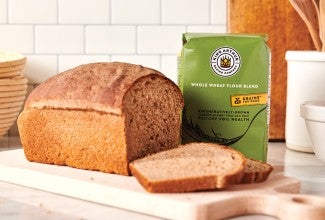The flour of the future
Our new Climate Blend is an innovative whole wheat flour grown using regenerative practices.
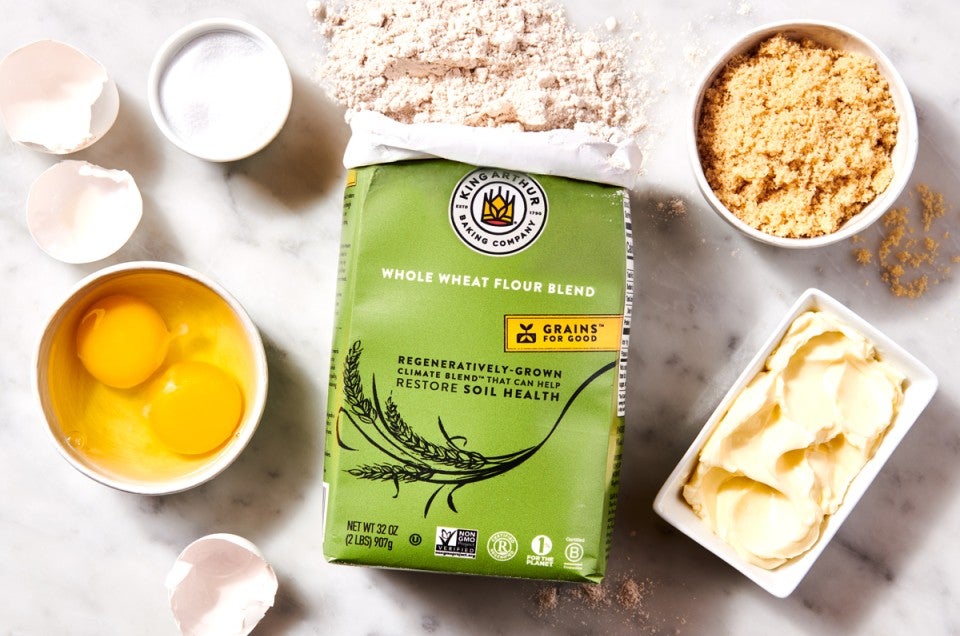

What if your flour could do more?
What if it didn’t just make comforting baked goods, but it was also milled from wheat that combatted climate change by storing carbon in the soil, building healthier ecosystems, restoring natural habitats, and much more?
That’s the power of our new Regeneratively-Grown Climate Blend, launching this month on our online Shop and exclusively in Whole Foods across the country. And that’s the future of flour.
This new whole wheat flour is an innovative blend of unique wheat varieties bred to be more tolerant of the planet’s changing climate. Not only is the wheat itself bred to be more resilient, but it’s also farmed in a planet-friendly way, by farmers using regenerative practices, allowing them to till less, replant less often, reduce input usage, and improve soil health while also growing wheat that can withstand extreme weather events — meaning less crop loss for the farmer (and more flour for us!).
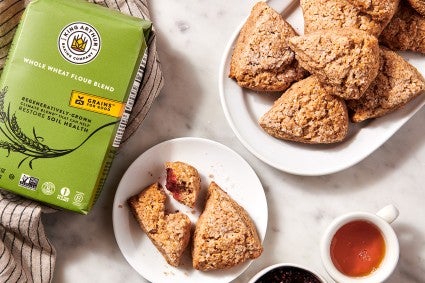
Regenerative agriculture is a term that’s been popping up all over the place recently, but what does it actually mean? Basically, it’s a step beyond sustainability. While sustainable practices are meant to sustain current conditions, regenerative practices are meant to improve them.
Overall, regenerative agriculture aims to restore and renew natural conditions using a range of practices that focus on healthy soils, ecosystems, and farming communities. “Our goals are to take care of the soil, our community, and human health,” says Brandon Bock, who grows Climate Blend wheat in North Dakota. He describes it as “farming with our eyes wide open.” While it’s especially critical for today’s planet, regenerative agriculture isn’t new — it embodies principles foundational to longstanding Indigenous land traditions, positioning humans as stewards of the land on which we live.
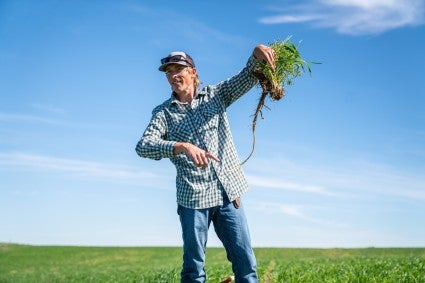
To put it in context: Conventional farming practices release water and carbon into the atmosphere; regenerative farming, on the other hand, traps water and carbon in the ground, restoring soil health, reducing erosion, and improving crop resiliency, particularly in the face of changing weather patterns. And it’s not just good for the earth — regenerative agriculture also supports farmers and their communities by providing future generations with more productive land. And because enriching soil also enriches the crops themselves, growing wheat regeneratively can result in more nutrient-rich harvests.
So basically, regenerative wheat is good for everyone:
And don’t just take our word for it: This flour has been third-party certified by Regenified, which uses a verification standard to help farmers track their regenerative journey.
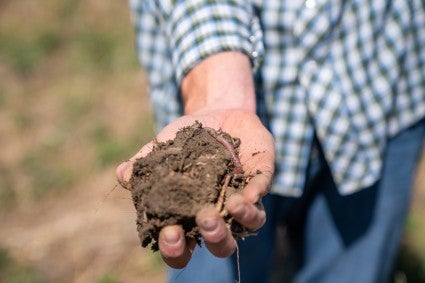
Climate Blend is part of King Arthur’s Grains for Good commitment, which also includes our regeneratively-grown Golden Whole Wheat Flour. Unlike Golden Wheat, Climate Blend is a unique blend (hence the name!) of three types of wheat, all of which were developed by Washington State University’s Breadlab. These include a new perennial wheat species (which means it doesn’t require annual planting, supporting soil health) combined with two hard red wheat varietals. This signature blend of climate-forward grains creates a delicious flour that’s easy to bake with, while also being sustainable.
These grains are all grown by two farmers: Brock Linker in Montana, and Brandon Bock in North Dakota. Brandon says his decision to switch to regenerative practices was “a conscious effort to be part of the solution to global warming, rather than part of the problem.” Since making the switch from conventional to regenerative practices, he’s seen “increased water infiltration, less wind erosion, and less nutrient runoff," and notes, “Our need for fertilizer has been dramatically reduced.”
While creating a better food system starts in the fields, it doesn’t end there. Bakers can do our part to support a healthier agricultural system with the flours we choose. “Consumers need to understand that the only way to achieve a more resilient agricultural system is through regenerative production,” emphasizes Brandon. “It is validating to see consumers care as much as we do about how their food is grown,” adds Brock. “For the first time in my life, it feels like the divide between consumers and producers is slowly narrowing.”
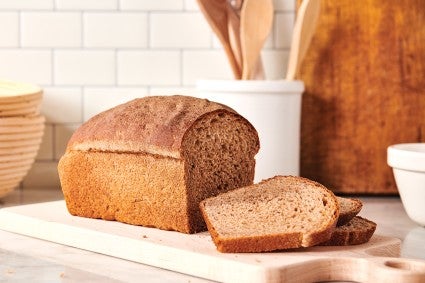
And while soil health and a better food system are important, so is flavor. So, what does this new flour taste like? It’s rich and nutty, with a tender texture perfect for bread, muffins, cookies, and more. We recommend trying it in our new recipes for Climate Blend Whole Wheat Scones, Climate Blend Chapati, and Climate Blend Sandwich Bread. But you can use it in any recipe that calls for whole wheat flour.
And as always, our Baker’s Hotline is available for any baking questions you have. Join us as we bake our way to a better future.
Order a bag of Climate Blend from our online Shop or find it at a Whole Foods near you with our Store Locator.
Cover photo by Danielle Sykes; food styling by Kaitlin Wayne.
